Replicable Sustainable Community Models – One Community Weekly Progress Update #364
Replicable sustainable community models can address sustainability, health, food insecurity, homelessness, and more. Here’s One Community’s update marking 7 years of weekly progress reports covering our process of creating all the necessary open source and free-shared components to build them. These open source components include sustainable and DIY-replicable approaches to food, energy, housing, education, for-profit and non-profit economic design, social architecture, fulfilled living, global stewardship practices, and more.
- Here’s our project overview
- Here’s our world-change methodology
- Here’s how this becomes self-replicating
- Here’s how we are open source and free-sharing all the do-it-yourself designs
WHAT ONE COMMUNITY IS CREATING
One Community is creating a place to grow together and change the world together, supporting replicable sustainable community models. We are creating a space that helps each other live in integrity with each other and the planet as we strive to be the greatest versions of ourselves. We do this by harmoniously respecting each other, nature, and the rest of our one shared planet.
Our goal is to demonstrate what we feel is the most sustainable, healthy, and fun environment we can create. A place based on compassion, kindness, and collaboration. This replicable community will serve as an example of how replicable sustainable community models are created and showcase what is possible.
Throughout our design process we are open sourcing and free-sharing everything needed for construction and replication. This includes what we call “Highest Good” approaches to food, energy, housing, education, for-profit and non-profit economics design, social architecture, fulfilled living, stewardship practices and more. We are creating these resources for implementation as individual components or complete developments called teacher/demonstration hubs that supports replicable sustainable community models. These hubs will help launch additional hubs as awareness and knowledge grow.
BUILDING THE FIRST OF MANY
One Community will be the first teacher/demonstration hub. It will function as an experiential-learning model that facilitates mass participation to address humanity’s most pressing challenges through: A replicable model for expansion, building seven self-sufficient village/city prototypes, becoming the world leader in open-source sustainability solutions, and evolving and expanding ALL aspects of sustainable living.
WHY ONE COMMUNITY IS CREATING THIS
The One Community self-replicating model is capable of creating a sustainable planet within 30 years. We will achieve this by establishing successful teacher/demonstration hubs on every continent that supports replicable sustainable community models. Villages include designs appropriate for each of the five main types of climates. They also include options for even the most challenged economies. These hubs will collaborate with one another, share ideas, resources, and work together as a network to heal the planet. They will also transform the global lifestyle to a more enjoyable, fulfilling, healthy, and sustainable one.
The specifics of how One Community is accomplishing this can be found on the One Community Solution Model to Create Solution-creating Models Page. Research supporting and showing the benefits of a model like this can be found on our Research and Resources Articles Archive.
Even if we don’t achieve our ultimate goal of global transformation, a self-replicating teacher/demonstration model like this will contribute to replicable sustainable community models, positively affecting millions while inspiring millions more. For One Community residents (the Pioneer Team), the idea of creating and sharing the social and recreational experience with visitors is also fun, exciting, fulfilling, and an additional reason why we are creating this.
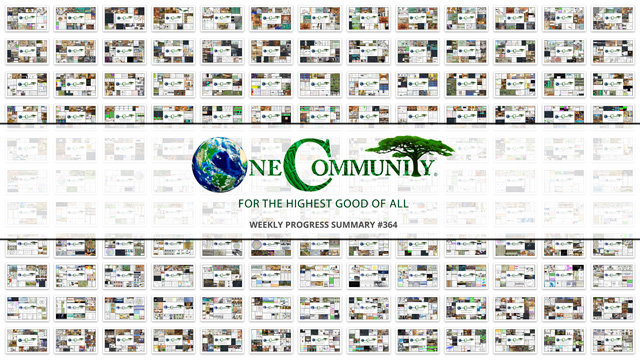
OUR MAIN OPEN SOURCE HUBS
Click on each icon to be taken to the corresponding Highest Good hub page.
One Community’s physical location will forward this movement as the first of many self-replicating teacher/demonstration communities, villages, and cities to be built around the world. This is the March 15th, 2020 edition (#364) of our weekly progress update detailing our team’s development and accomplishments in replicable sustainable community models:
Replicable Sustainable Community Models
One Community Progress Update #364
DONATE | COLLABORATE | HELP WITH LARGE-SCALE FUNDING
CLICK HERE IF YOU’D LIKE TO RECEIVE AN EMAIL EACH WEEK WHEN WE RELEASE A NEW UPDATE
YOU CAN ALSO JOIN US THROUGH SOCIAL MEDIA
ONE COMMUNITY WEEKLY UPDATE DETAILS
HIGHEST GOOD HOUSING PROGRESS
 One Community is is designing replicable sustainable community models through Highest Good housing that is artistic and beautiful, more affordable, more space efficient, lasts longer, DIY buildable, and constructed with healthy and sustainable materials:
One Community is is designing replicable sustainable community models through Highest Good housing that is artistic and beautiful, more affordable, more space efficient, lasts longer, DIY buildable, and constructed with healthy and sustainable materials:
-
-
- Learn about: Our Upcoming Crowdfunding Campaign
- Learn about the different village models: 7 Sustainable Village Models
- Visit the open source portals for the first two: Earthbag Village OS Hub | Straw Bale Village OS Hub
-
This week the core team continued with what we hope will be the 2nd-to-final review of the Murphy bed instructions. This week we finished test assembly and review of the storage unit instructions, night stand instructions, and started work on the benches and table review. You can see some of this work in progress below.
Ziqian Zheng (Architectural Designer and Drafter), also continued working on the Earthbag Village and completed week 18 as a volunteer designer with our team. This week’s focus was continuing work on the Earthbag Village walkthrough, adding stairs to the Net Zero bathrooms, additional plan details, more people, and producing the first actual video walkthrough. You can see some of the screenshots from the new walkthrough here.
Shadi Kennedy (Artist and Graphic Designer) also completed his 80th week developing the Murphy bed instructions. This week’s focus was further integration of parts updates and working on various measurement updates and the addition of an opening to access the switches and plugins from the bed. We’d say these assembly instructions are still about 94% complete.
And Dean Scholz (Architectural Designer) continued helping with the Earthbag Village (Pod 1) 4-dome cluster designs. This week was week #181 of Dean’s work and the focus this week was finishing the cutout for the ground that will surround the structure, adding irregularity to it to make it look more natural, and beginning to test our first textures. You can see pictures of these updates below.
DUPLICABLE CITY CENTER PROGRESS
 One Community is is designing replicable sustainable community models through a Duplicable and Sustainable City Center that is LEED Platinum certified/Sustainable, can feed 200 people at a time, provide laundry for over 300 people, is beautiful, spacious, and saves resources, money, and space:
One Community is is designing replicable sustainable community models through a Duplicable and Sustainable City Center that is LEED Platinum certified/Sustainable, can feed 200 people at a time, provide laundry for over 300 people, is beautiful, spacious, and saves resources, money, and space:
-
-
- Learn about this building and it’s function: Duplicable City Center Open Source Hub
-
This week Radhieka Nagpal (Volunteer Researcher) completed her 4th week researching the Most Sustainable Building Materials: Carpet, Flooring, Wood, Etc. This week Radhieka worked on the final drafting of the list of 5 flooring companies. This included grammatical updates and edits to try and make the process flow of information uniform across all 5 companies. Based on the benchmarking, a new company was added as a replacement. She worked on researching that company to write about its key features, pros, and cons. You can see some of this work-in-progress below.
HIGHEST GOOD FOOD PROGRESS
 One Community is is designing replicable sustainable community models through Highest Good food that is more diverse, more nutritious, locally grown and sustainable, and part of our open source botanical garden model to support and share bio-diversity:
One Community is is designing replicable sustainable community models through Highest Good food that is more diverse, more nutritious, locally grown and sustainable, and part of our open source botanical garden model to support and share bio-diversity:
-
-
- Learn about the structures: Hoop House Hub | Aquapini & Walipini Open Source Hub
- See what we’ll be growing: Gardens & Hoop Houses | Large-scale Structures | Food Forest | TA
-
This week the core team continued working on our behind-the-scenes chicken Google Doc. This week we continued review and reformatting of the complete document, did further research to confirm all the details, and rewrote the Why Chickens section to reflect the updates to the rest of the doc and included the latest details researched. You can see some of this work here.

Replicable Sustainable Community Models – Behind-the-scenes Chicken Google Doc – Click for Page
And the core team continued developing the open source permaculture design content. This week’s focus was completing the first draft of the Energy Infrastructure and beginning composition of the Housing Infrastructure. Both of these are within Step 2 (Assess Site through observation and research) of the Permaculture Design Case Study. You can see some of this behind-the-scenes work below.
This week Mohammad Almuzaial (Civil and Construction Engineer) continued with his 16th week helping with the Aquapini/Walipini civil engineering details. This week he finalized the topo model in multiple formats including SketchUp format, DXF, and DWG, reflected the satellite imagery onto the topography for realistic visualization, started designing and modeling water supply network, and finished the piping layout for the Aquapini structure. You can see some of this work work-in-progress here and we’d say this brings this part of this component to 93% complete.
Ali Ghahremannezhad (Mechanical Engineer) additionally continued with his 15th week as a member of the team and working on the climate batteries for the Aquapini/Walipini structures. This week Ali worked on 2D transient simulations of the aquapini and walipinis to account for the daily air temperature and solar heat variations for a greenhouse in a climate like ours.
Based on the evaluated base conditions, air flow simulations have been started to obtain the average temperature of the greenhouse for July for both with and without climate pipe cases, to investigate the design of the pipes. The effect of using soil between the pipes is modeled by creating the geometry of the pipes inside the soil and adding the extended soil geometry along with the inserted insulations.
HIGHEST GOOD EDUCATION PROGRESS
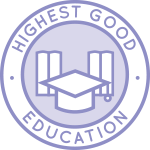 One Community is is designing replicable sustainable community models through Highest Good education that is for all ages, applicable in any environment, adaptable to individual needs, far exceeds traditional education standards, and more fun for both the teachers and the students. This component of One Community is about 95% complete with only the Open Source School Licensing and Ultimate Classroom construction and assembly details remaining to be finished.
One Community is is designing replicable sustainable community models through Highest Good education that is for all ages, applicable in any environment, adaptable to individual needs, far exceeds traditional education standards, and more fun for both the teachers and the students. This component of One Community is about 95% complete with only the Open Source School Licensing and Ultimate Classroom construction and assembly details remaining to be finished.
With over 8 years of work invested in the process, the sections below are all complete until we move onto the property and continue the development and open sourcing process with teachers and students – a development process that is built directly into the structure of the education program and everything else we’re creating too:
- Program Overview: Education Open Source Hub
- How the components work together: How to use the Education for Life Program
- Lesson Plans for Life – Lesson Plans How-to
- Foundations of Outstanding Leaders, Teachers, and Communicators
- Curriculum for Life
- Teaching Strategies for Life
- Learning Tools and Toys for Life
- Evaluation and Evolution
This week Dan Alleck (Designer and Illustrator) completed his 68th week helping with render additions and finishing work for the rooms in the Ultimate Classroom. This week he continued work on the yellow room, a room focused on the subject of Math and the character traits of peaceful leadership, sharing, self esteem, respect for others, self-control, self-discipline, calmness, and initiative. What you see here is Dan’s 3rd round of object and people additions, adding posters and additional details to the people to bring to room to about 50% complete.
HIGHEST GOOD SOCIETY PROGRESS
 One Community is is designing replicable sustainable community models through a Highest Good society approach to living that is founded on fulfilled living, the study of meeting human needs, Community, and making a difference in the world:
One Community is is designing replicable sustainable community models through a Highest Good society approach to living that is founded on fulfilled living, the study of meeting human needs, Community, and making a difference in the world:
-
-
- Read the Highest Good society overview: Highest Good Society
- Learn about the model for fulfilled living and sharing: A Day in the Life
- Learn about the 4 economic models: RBE | For-profit | Non-profit | Entrepreneurship
- Learn about our open source community collaboration and management software: The Highest Good Network
-
This week the core team updated the One Community Agreement and our 2nd interview structure to improve the flow and remove redundancy. We also reviewed and updated the Satellite Member Invitation page and several other pages related to the application process. All of the changes are to simplify the application process and our message.
Tengxiao Wang (Software Engineer) completed his 10th week working on the Highest Good Network software. This week Tengxiao added more elements to the timelog page. He added a progress bar which would change color as the total effort grows. He also added an effort statistics bar (tangible / intangible / total effort) and a project filter. And he implemented the “search by date range” tab which enables a more flexible search on time entries. You can see some of this work below.
Henry Ng (React Developer) also completed his 7th week with the team and working on the Highest Good Network software. This week Henry wrapped up some source code, fixed bugs in the Projects functionality to make sure, designed pages to go to the WBS for each project, and designed WBS objects for the MongoDB based on the WBS.xlxs files. He also added a feature to load <file>.csv instead of <file>.xlxs to the web because .xlxs has style data which destroys the structure of the data. You can see some of this work below.
And last but not least, Simon Xiong (Programmer) completed his 6th week working on the Highest Good Network software. This week Simon was able to discuss with teammates and resolved concerns on changes made for unit testing the Login component. The Final Draft for HGN Unit Testing Best Practice was started and research on how to document a web application and best practices was conducted. The React Styleguidist methodology was chosen and a style guide example was begun. Screenshots of some of this work are below.
SUMMARY – REPLICABLE SUSTAINABLE COMMUNITY MODELS
One Community sees the issues of the world as interdependent and interconnected. To address them simultaneously, and support the process of biohacking our future, we are open-source blueprinting a more advanced standard of living by designing holistic, environmentally-regenerative, self-sustaining, adaptable solutions for all areas of sustainability. We will model these within a comprehensive “village/city” which will be built in the southwestern U.S. This teacher/demonstration hub will be a place people can experience a new way of living and then replicate it with our open source blueprints: creating a model solution that creates additional solution-creating models.
AND WE PRODUCED THIS WEEKLY UPDATES BLOG – CLICK HERE TO SUBSCRIBE
FOLLOW ONE COMMUNITY’S PROGRESS (click icons for our pages)
INVESTOR PAGES
GET INVOLVED
DONATE ● WAYS ANYONE CAN HELP ● MEMBERSHIP
CLICK HERE FOR ALL PAST UPDATES
 One Community
One Community




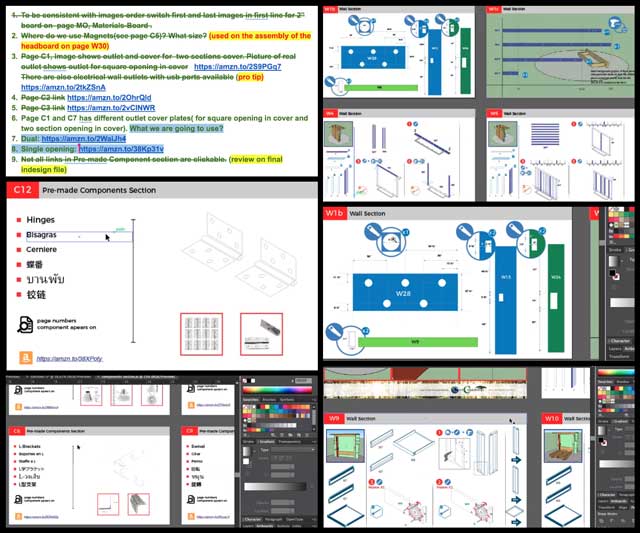


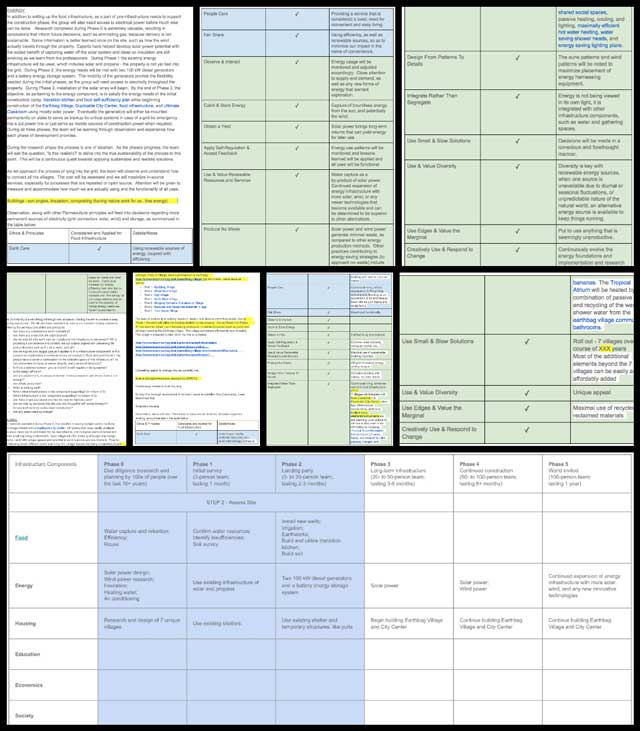
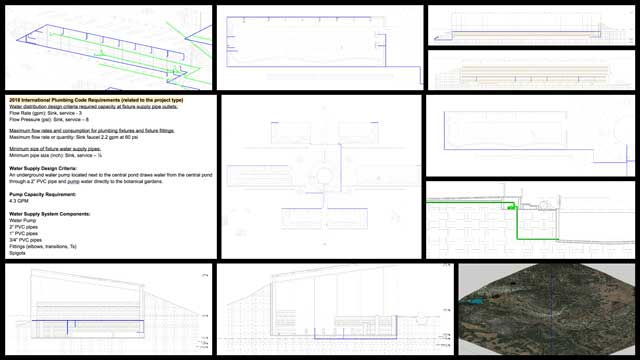






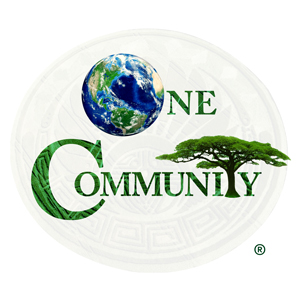


Connect with One Community